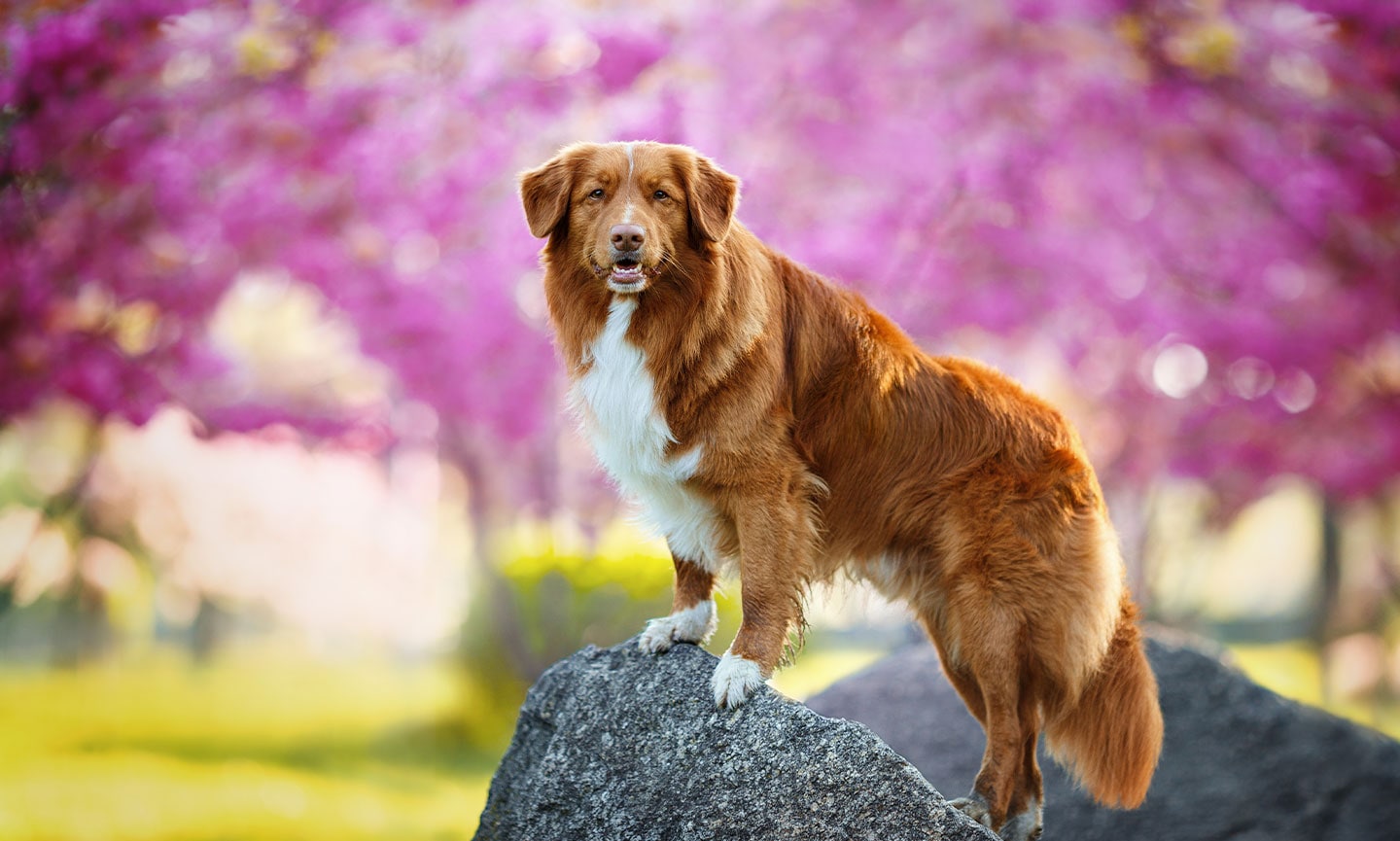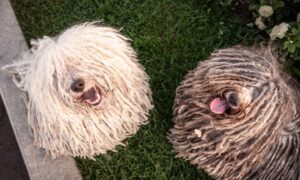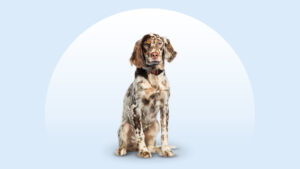Nova Scotia Duck Tolling Retriever
Updated May 5, 2025
Nova Scotia Duck Tolling Retriever
Updated May 5, 2025
Nova Scotia Duck Tolling Retrievers, affectionately known as "Tollers," are a medium-sized sporting dog breed originating from Canada. Renowned for their intelligence, playful demeanor and fox-like red coat, Tollers excel in hunting and do best in active households.
Energetic, Intelligent, Devoted
Male: 35-50 pounds
Female: 35-50 pounds
Male: 18-21 inches
Female: 17-20 inches
12 to 14 years
Red, Buff, Red Gold
If you’ve always wanted a workout buddy who never flakes and will accompany you on your adventures without asking anything in return—except maybe a sloppy kiss—then a Nova Scotia Duck Tolling Retriever could be your new best friend. Tollers are energetic pups who thrive in active households. The smallest of the retrievers, they were bred to run along riverbanks to entice ducks to the shore. So, if “water sports” is your middle name, the Nova Scotia Duck Tolling Retriever is ready to make a splash with you.
Nova Scotia Duck Tolling Retriever Characteristics
Nova Scotia Duck Tolling Retriever Appearance
The regal Nova Scotia Duck Tolling Retriever looks similar to a fox. They have a striking golden red coat with a dash of white markings. Their bright eyes exude intelligence, determination and affection. This small retriever is athletic and lean with a flowing, feathery coat and a jaunty white-tipped tail that wags high to signal their zest for working.

- Ears
Nova Scotia Duck Tolling Retrievers' triangular ears have rounded tips and frame their face with a graceful floppiness.
- Eyes
Their eyes are almond-shaped and match the their golden red coat color.
- Nose
Tollers have a broad nose with wide-open nostrils. Their nose either matches the color of their coat or is black.
- Coat Length
They have a soft, medium-length, water-repellent double coat. The top coat may be feathered or wavy. Their undercoat is soft and thick.
- Coat Color
Their coat colors are any shade of red from a golden red to a dark, coppery red and may have white markings on the tip of their tail, feet, chest or blaze (between their eyes).
- Tail
The Nova Scotia Duck Tolling Retriever's tail is long and feathered. Tollers hold their tails upright in a slight curve when they're alert and working.
Nova Scotia Duck Tolling Retriever Temperament
The Nova Scotia Duck Tolling Retriever is high-energy, playful and loving with a dash of independence—especially when they get distracted. Their temperament reflects their hunting dog origins. If they’re not hunting, their next favorite thing to do is play with you or a gaggle of kids (a match made in heaven!). They’re also great with other dogs, and if raised around cats as a puppy, they’ll accept felines. Be warned: A Toller dog’s energy level and drive may sometimes be too much for cats.
The Toller breed is a friendly, social and loving dog, so start socializing them while they’re puppies to bring out these wonderful traits as they grow up. Just be warned: pent-up energy will express itself in unwanted behaviors if they don’t get enough physical and mental exercise. These pups are not for people who love the couch more than activity.
How to Care for a Nova Scotia Duck Tolling Retriever
The Toller breed is a gun dog bred for duck hunting. This means they need a job to channel their high energy. They require a lot of physical and mental exercise, confident leadership and obedience training. Tollers are very loving and affectionate, so pet parents committed to respecting their intelligence, playfulness and work ethic will reap the rewards of having this awesome dog to call their own.
Grooming
Training
Diet
Exercise
Environment
Nova Scotia Duck Tolling Retriever Health
Nova Scotia Duck Tolling Retrievers have a lifespan of 12 to 14 years and are a relatively healthy breed without many health problems. But it’s best to be aware of their health issues.
- Hip and Elbow Dysplasia: Dysplasia occurs when the joints don’t form properly, which causes them to rub and result in lameness, pain, and arthritis. Treatments range from weight management to physical therapy to surgery.
- Progressive Retinal Atrophy (PRA): PRA is a degenerative eye disease that eventually causes vision loss. This condition has no treatment, but a pup can still live a happy life with vision loss. A genetic screening test is available, so ask your breeder.
- Addison’s Disease: This is a disorder of the endocrine system where the adrenal glands fail to produce enough hormones for normal function. It usually starts with lack of appetite, vomiting or diarrhea but can be more severe with collapsing and life-threatening low blood sugar, low heart rate, and elevated potassium. Diagnosis is typically a blood test, and with treatment, dogs with Addison’s can live relatively normal lives.
- Degenerative Myelopathy: DM is a neurological disorder that affects the white matter tissue of the spinal cord. The disease usually appears in adulthood, and dogs exhibit gradual muscle atrophy and loss of coordination that typically begins in the hind legs. There is no treatment for this condition at this time, but genetic screening testing is available.
- Degenerative Encephalopathy: With this disease, the region of the brain that’s important in controlling movement and some aspects of behavior degenerate over time. Unfortunately, there are no treatments for this disease.
Nova Scotia Duck Tolling Retriever History
It’s all in a name when it comes to the Nova Scotia Duck Tolling Retriever’s origin. This breed hails from the Little River District of Nova Scotia, where 19th-century sportsmen first bred them. Their nickname, Little River Duck Dog, is an homage to their origins.
Tollers were bred with a particular purpose in mind. These “decoy dogs” are designed to imitate foxes in size and color. Hunters took them along the river banks to act as a decoy to splash along the shoreline and lure curious ducks to shore. (Did you know ducks are fascinated by foxes? They are, though the exact reason why is unclear.) The breed’s name includes a derivative of the Middle English word tollen, which means to lure. Once the ducks came to see what commotion the Tollers were causing, they were poised for hunters to shoot them. The history of the Nova Scotia Duck Tolling Retriever is still evident in the breed’s personality—they are inexhaustible, hardworking dogs capable of retrieving without seeming to stop.
The American Kennel Club recognized the Nova Scotia Duck Tolling Retriever in 2003. Not surprisingly, they are the breed with the longest name in the AKC Studbook.
Hoping to add a Nova Scotia Duck Tolling Retriever to your pack? Find a list of reputable breeders on the American Kennel Club website. What’s the average price for a puppy? You can expect to pay an average of $1,500 to $2,500 for a pup. But for that price, you’re likely getting a pup who’s been screened for health and temperament issues and may come with pedigree papers. You can also contact a Nova Scotia Duck Tolling Retriever rescue organization near you, keep an eye out for the breed at your local animal shelter to adopt a pup, or search Chewy’s database of adoptable dogs in your area.
FAQs
Do Nova Scotia Duck Tolling Retrievers shed?
Are Tollers good family dogs?
Do Nova Scotia Duck Tolling Retrievers bark a lot?
What are the most popular Nova Scotia Duck Tolling Retriever names?
What are the most common Nova Scotia Duck Tolling Retriever Mixes?
Expert input provided by Dr. Jerry Klein, Chief Veterinary Officer for the American Kennel Club, Dr. Elizabeth Grey, Veterinarian, President and Hospital Director of Carmel Mountain Ranch Veterinary Hospital, and owner of Dr. Grey’s Play & Stay, and Graham Bloem, Certified Dog Trainer & Behavior Expert, Owner & Training Director of Specialty Dog Training.
Breed characteristic ratings provided by veterinarian Dr. Sarah J. Wooten, DVM, CVJ, a veterinarian at Sheep Draw Veterinary Hospital in Greeley, Colorado; dog trainer and behavior consultant Irith Bloom, CPDT-KSA, CBCC-KA, CDBC, owner of The Sophisticated Dog, LLC, in Los Angeles; and certified animal behavior consultant Amy Shojai, CABC, in Sherman, Texas.
The health content was medically reviewed by Chewy vets.








